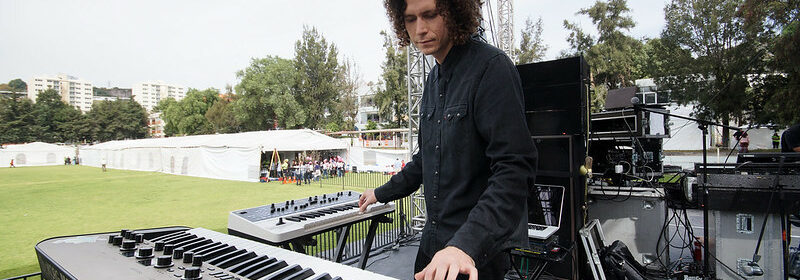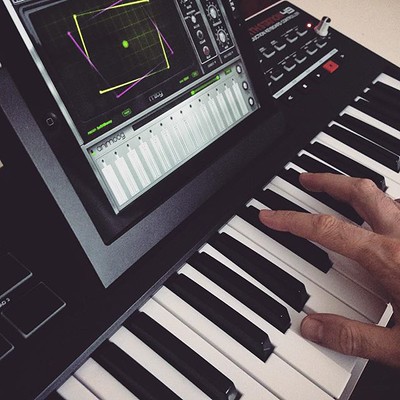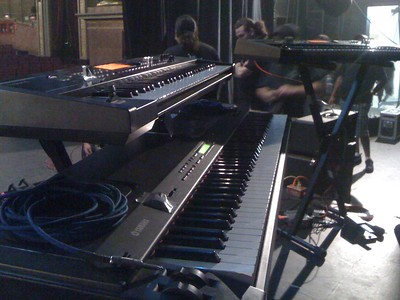DISCOVER THE BEST SYNTHESIZERS AT MICROFUSA

A synthesizer is an electronic musical instrument that generates electrical signals that are converted into sound through speakers or headphones.
Synthesizers are so called because they can imitate, or synthesize, a wide variety of sounds, such as the sound of another instrument, a voice, a helicopter, a car or a barking dog.
Modular synthesizers can also produce sounds that do not occur in the natural world. The ability to generate tones that cannot otherwise be created is what makes the synthesizer a unique musical tool.
At MicroFusa, a store specializing in music technology products, they offer a wide variety of synthesizers, module synthesizers, software synthesizers, keyboard synthesizers, and much more!

How synthesizers work
In synthesizers, the task of generating the tone falls to a component known as an oscillator.
Most oscillators in synthesizers generate rich waves on a harmonic scale, such as sawtooth, triangle, square and pulse waves, as well as sine waves.
Sculpting the fundamental tone and related harmonics into another sound is achieved by directing the signal from one component, also known as a module, to another component of the synthesizer. Each module does a different job that affects the original signal.
Types of synthesizers
Analog Synthesizer
An analog synthesizer combines voltage-controlled circuits to generate and shape sounds.
The amount of voltage is directly related to the tone of the wave, so a higher voltage equals a higher tone.
Digital Synthesizer
In digital synthesizers, the signal flow is digital. The binary descriptions of the signal (a sequence of zeros and ones) are passed from one algorithm to another.
Hybrid analog and digital synthesizers
Some synthesizer designs include digital oscillators that generate signals using binary wave descriptions. The signal from the digital oscillators is then sent to analog filters and amplifiers.
The main advantage of this approach is that digital oscillators do not vary in tone, which is a common problem with analog oscillators.
Virtual Analog
A virtual analog synthesizer is a digital synthesizer that emulates the architecture, characteristics and peculiarities of an analog synthesizer. The behaviors and functions of the oscillators, filters and other modules that might be found in an analog synthesizer are imitated by computerized algorithms.
Synthesizers are so called because they can imitate, or synthesize, a wide variety of sounds, such as the sound of another instrument, a voice, a helicopter, a car or a barking dog.
Modular synthesizers can also produce sounds that do not occur in the natural world. The ability to generate tones that cannot otherwise be created is what makes the synthesizer a unique musical tool.
At MicroFusa, a store specializing in music technology products, they offer a wide variety of synthesizers, module synthesizers, software synthesizers, keyboard synthesizers, and much more!
How synthesizers work
In synthesizers, the task of generating the tone falls to a component known as an oscillator.
Most oscillators in synthesizers generate rich waves on a harmonic scale, such as sawtooth, triangle, square and pulse waves, as well as sine waves.
Sculpting the fundamental tone and related harmonics into another sound is achieved by directing the signal from one component, also known as a module, to another component of the synthesizer. Each module does a different job that affects the original signal.
Types of synthesizers
Analog Synthesizer
An analog synthesizer combines voltage-controlled circuits to generate and shape sounds.
The amount of voltage is directly related to the tone of the wave, so a higher voltage equals a higher tone.
Digital Synthesizer
In digital synthesizers, the signal flow is digital. The binary descriptions of the signal (a sequence of zeros and ones) are passed from one algorithm to another.
Hybrid analog and digital synthesizers
Some synthesizer designs include digital oscillators that generate signals using binary wave descriptions. The signal from the digital oscillators is then sent to analog filters and amplifiers.
The main advantage of this approach is that digital oscillators do not vary in tone, which is a common problem with analog oscillators.
Virtual Analog
A virtual analog synthesizer is a digital synthesizer that emulates the architecture, characteristics and peculiarities of an analog synthesizer. The behaviors and functions of the oscillators, filters and other modules that might be found in an analog synthesizer are imitated by computerized algorithms.

